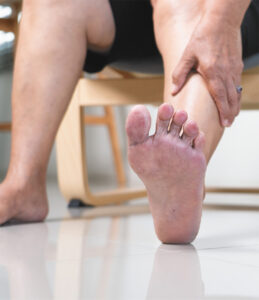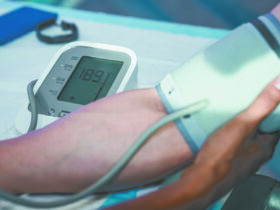By Dr. Lori DeBlasi, DPM, FACFAS
 As a podiatrist, I often view the human body through the lens of the feet. They are our foundation, yet they are often the last place we look when a health crisis begins. For people living with diabetes, this oversight can be catastrophic. The correlation between diabetes and foot health isn’t merely a minor complication; it is a profound and urgent medical concern.
As a podiatrist, I often view the human body through the lens of the feet. They are our foundation, yet they are often the last place we look when a health crisis begins. For people living with diabetes, this oversight can be catastrophic. The correlation between diabetes and foot health isn’t merely a minor complication; it is a profound and urgent medical concern.
It’s fitting that November is American Diabetes Month. This is a vital time for national awareness, not just about blood sugar management, but about all the systemic effects of this disease, particularly on the lower extremities. Diabetes is relentless, and its high blood sugar levels—or hyperglycemia—wage a silent war on the body’s most delicate structures, often starting furthest from the heart: the nerves and blood vessels in the feet.
The Dual Threat: Neuropathy and PAD
The two primary mechanisms that put diabetic feet at such high risk are neuropathy and peripheral arterial disease (PAD).
Diabetic Neuropathy is one of the most insidious complications. Chronic high blood sugar damages the small nerve fibers, leading to a loss of sensation, or numbness, in the feet. I have patients who have walked into my office completely unaware they have a stone in their shoe, a blistering friction rub, or even a puncture wound. This loss of sensation means the injury goes unnoticed, uncleaned, and untreated. This small, overlooked cut quickly progresses to a wound, an ulcer, and often, an infection because our body’s natural pain alarm system has been silenced.
Peripheral Arterial Disease (PAD) is the failure of the delivery system. Diabetes accelerates the narrowing of arteries. When this affects the legs and feet, it starves the tissue of the oxygen-rich blood it needs. Healthy blood flow is essential for two things: delivering nutrients and fighting infection. In a diabetic foot with PAD, a small cut not only struggles to heal but the body’s immune cells cannot reach the wound effectively. The smallest infection can rapidly spiral into an abscess and ultimately, gangrene. This is why diabetes is the leading cause of non-traumatic lower-limb amputations.
The confluence of neuropathy and PAD creates the perfect storm for a diabetic foot ulcer—an open sore that fails to heal. They are entry points for bacteria and are notoriously difficult to treat, often requiring specialized wound care and months of offloading (keeping weight off the foot).
My Prescription for Prevention
As a podiatrist, my primary goal in treating a diabetic patient is simple: prevention. This is a proactive, daily commitment, and it starts with you.
1. Perform Daily Foot Checks: Look at your feet every day, top and bottom. Use a mirror if you can’t easily see the soles. Look for cuts, blisters, redness, or swelling. If you find something, call a podiatrist immediately.
2. Control Your Blood Sugar: Excellent glycemic control is the single best defense against developing or worsening neuropathy and PAD.
3. Wear Protective Footwear: Never walk barefoot, even inside. Always wear comfortable, well-fitting shoes or slippers. For patients with significant neuropathy, specially designed diabetic shoes are a necessity.
4. Schedule Regular Podiatric Care: You need a podiatrist as a partner in your diabetes management. I recommend visits at least every six months, but often quarterly. During these visits, we safely trim nails, remove dangerous calluses, assess circulation, and check for the earliest signs of nerve damage.
Taking Action
If you or a loved one has diabetes, please use American Diabetes Month to make a solemn vow to your health. If you have not seen a podiatrist in the last six months, schedule your comprehensive diabetic foot exam today. Taking proactive care of your feet is the most important action you can take to preserve your mobility, your independence, and your future.
A Special Message: If you currently have an open sore or a non-healing wound on your foot, this is an absolute medical emergency. Do not wait. Take immediate action and contact our office right now. Non-healing wounds can not only lead to amputation, but even death. At Family Foot & Leg Center, our doctors are trained to treat non-healing wounds with the latest techniques and biological products that not only heal better, but also faster!
Disclaimer: This content is not intended to be a substitute for professional medical advice, diagnosis, or treatment. Always seek the advice of your physician or other qualified health care provider with any questions you may have regarding a medical condition.
Lori DeBlasi, DPM, FACFAS
Dr. Lori DeBlasi is certified by the American Board of Foot and Ankle Surgery®. Dr. DeBlasi works at Family Foot & Leg Center at the Estero office. She is accepting new patients.
To make an appointment, call 239-430-3668 or visit www.NaplesPodiatrist.com.
21401 Corkscrew Village Lane,
Suite 4
Estero, FL 33928
(239) 430 – 3668 (FOOT)
www.NaplesPodiatrist.com






